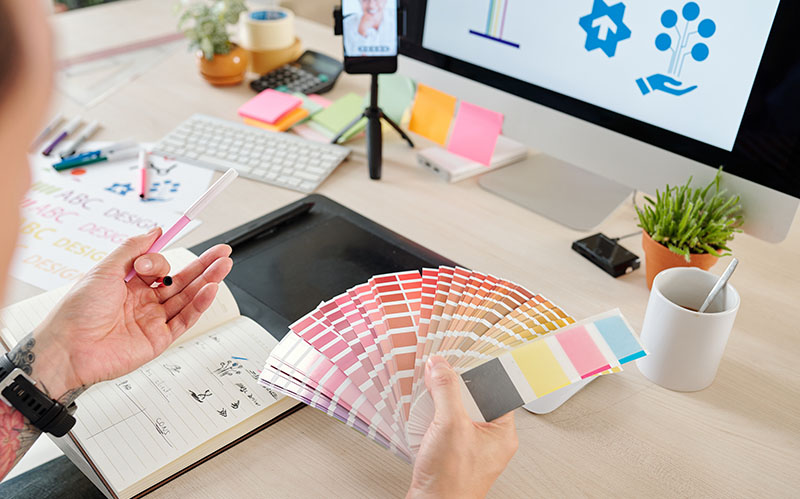Logo design is the most basic element of brand recognition. Just one glimpse of the golden arches, a bitten apple, or folksy mermaid and you know the brand. But how can you achieve that same level of brand recognition with your logo? Here we explain what to consider when designing your logo.
Respect the Holy Trinity
The holy trinity of logo design includes layout, color, and font/typography. An honorable mention is an illustrated icon like McDonald’s arches, Amazon’s smile/arrow, or Starbuck’s mermaid. Every brand doesn’t need a graphic element; in fact, some brands find success focusing on these elements in different ways. However, there really is no way around using the holy trinity in logo design so how do each of these elements impact your logo?


Choose the Right Color(s)
Successful brands use color wisely to help support brand recognition. McDonald’s red and gold, Starbuck’s black and green, Google’s primary color palette, and Walmart’s corporate blue are all associated with their brands—a result of consistent color presentation in the logo, packaging, advertising, etc. Because humans are more visual, a flash of color is one of the best ways to help people process your brand. Keep in mind, though, that color is quite emotional. You have to choose a color that evokes the right emotions for your brand.
For example, blue triggers feelings of trust, serenity, and even stability, while red is associated with passion and anger. McDonald’s success with red is likely because it is combined with yellow, which is considered friendly and open.
If you sell a product that is packaged, remember 85% of customers base their decisions on packaging color. Do some research before choosing your colors to ensure you choose a color you can live with and one that sends the right message about your brand.
Express Your Brand Personality with Fonts
Your logo’s font should be easy to read and distinct. Unless it suits your brand’s personality, the font doesn’t have to be overly ornate or fancy. For example, some simple yet high-profile fonts include Absolut, Amazon, and FedEx. All are unadorned and make a bold statement; they are easy to read and used consistently with the brand colors. They also have a flexible stamp, making it easier to incorporate the logos without concerns for layout and placement.
Alternately, more flamboyant fonts are used by The New York Times, Coca Cola, Kleenex, and Virgin records. These fonts have a handwritten flair that stands out. On the whimsical side are logos such as Barbie and Lego, both toy brands that need to communicate a sense of playfulness.
Create a Clever Layout
Your logo layout needs to be eye-pleasing. Looking at some logs, you may think they didn’t consider layout; however, however, what appears to be the absence of layout is actually a layout. For example, Vogue magazine uses all caps to enhance the power of its logo; Calvin Klein uses a lower-case sans serif to spell their name, overlain with large serif fonts to stamp their initials. The smile incorporated into the Amazon logo is another example of a clever layout. The smiling arrow points from A to Z, suggesting they sell everything.
All of these decisions are conscious and are related to the design and layout of the font. How you lay out your logo, whether you use graphic elements or not, significantly impacts its memorability and cleverness.
Considering these three important elements will help you create a logo that is memorable and relatable to your brand.

